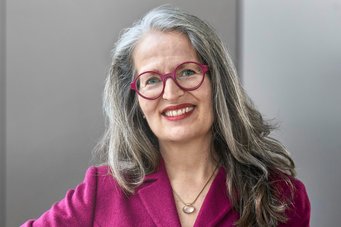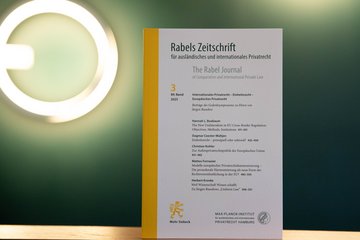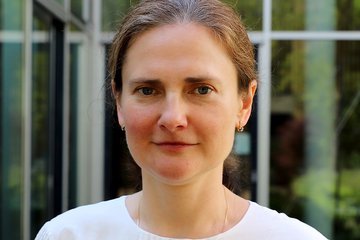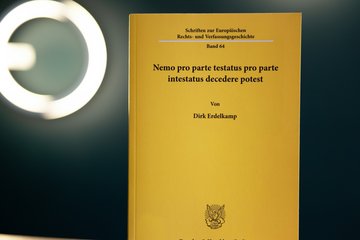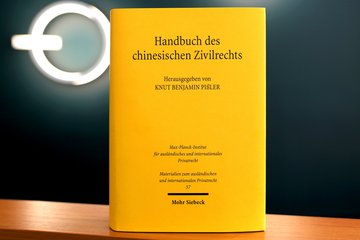
Bodily Self-Determination: A Graduated Right
In her new book, director at the Institute Anne Röthel traces the development of the right to bodily self-determination into a more generalized body of law over the course of the 20th century, only to observe its current state of incompletion. Her analysis addresses the situation of three categories of persons whose right to bodily self-determination remains distinct from that of “normal” adults: persons receiving medical care, children, and persons without full legal capacity.
Bodily self-determination qualifies as a human right. But although the Basic Law (Germany’s constitution) both promises and protects the sanctity of and control over one’s own body, it nonetheless does not secure an unqualified right to bodily autonomy. “There’s a long tradition of a double standard,” says Röthel – a surprising realization that prompted her to study the ways in which the peculiarities of illness, childhood, or simply of “being different” in Germany have coloured the law’s view of bodily autonomy. In her book, she examines the development of the rights of children, persons receiving medical treatment, and persons without full legal capacity in Germany since the turn of the 20th century. She adduces numerous examples of how parents, doctors, and caregivers remain empowered to this day to decide what happens to persons in these categories. The book is addressed to a wider audience despite its concentration on law.
Unequal lots in life and lingering obstinacy
Röthel has adopted the perspective that bodily self-determination designates a fundamental value and that the law should enable its realization to the fullest and most general extent possible. She puts forward two arguments to support her positive assessment of bodily autonomy.
Her first argument is that our bodies are our lot in life, and since we are born into different bodies, these lots are unequal. So, while we share a common fate – we have a lot in common despite the inequality – our own individual lots are unequal. “No law in the world will ever prevent frailty, predispositions, accidents, illness or infection.” Thus, one way to remove the sting of our unequal fates is to guarantee bodily self-determination.
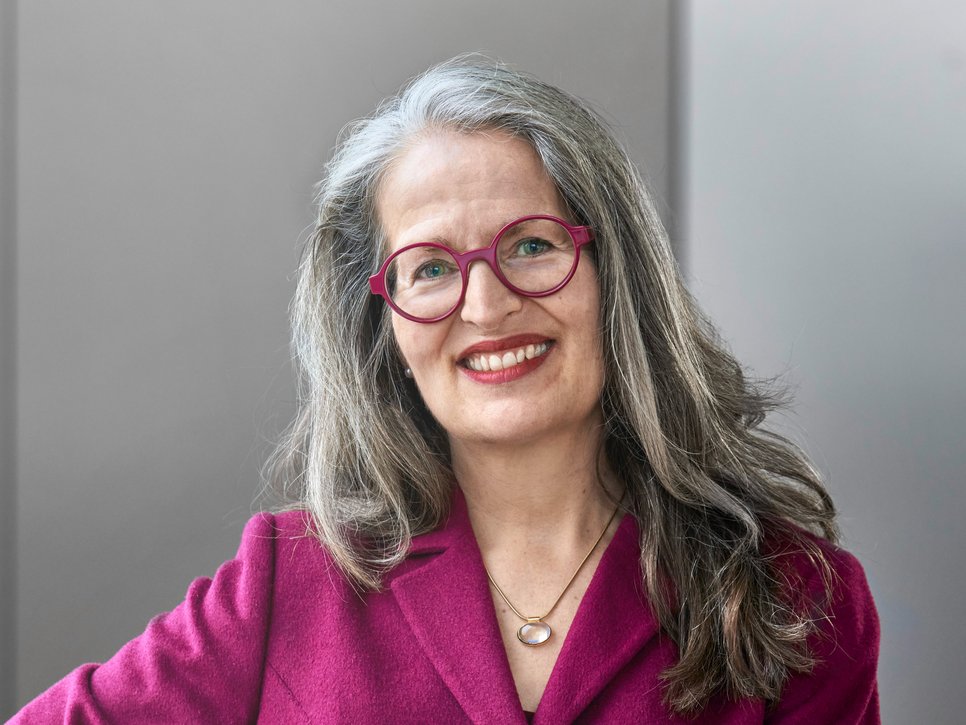
“What we see is a contest among specific coalitions, of forces aligned with or against each other, at particular times and with discernible motivations, who get involved and influence legal policy debates and who thereby affect the creation of law.”
– Institute Director Anne Röthel –
Her second argument is that bodily self-determination lets us escape certain epistemic conundrums that result from the discernment of different shades and gradations of bodily self-determination in the law, based on customary notions such as age, illness, and disability. She points out that these categories – to a degree we cannot confidently claim to know – are social constructs, at least in part. Here she deftly illuminates the burgeoning controversy around gender categories that has been brewing ever since Simone de Beauvoir’s dictum that “One is not born, but rather becomes, a woman”, a controversy that has grown to encompass racial categories as well. “These debates can’t be brought to a natural conclusion, for they implicate questions that are not completely accessible to our intellects,” she says. For “how can one simply reason one’s way to certainty about whether the origins are social if it can’t be ruled out that we ourselves have always been up to our necks in, and thus shaped by, the discourse?”
Röthel parlays these arguments into one of the main topics of her study. “Another reason I insist on bodily self-determination,” she says, “is that in most cases we are confronted with irresolvable issues when we try to articulate a basis for our evaluations of decisions about the body. This creates difficulties for any attempt in law to discern different grades of bodily autonomy and makes every additional increment of bodily autonomy worth striving for”.
Legal developments close up
Röthel’s book reconstructs and analyses legal developments in regard to medical treatment, custody of children, and adult protective arrangements. Children as well as persons receiving medical treatment or who lack full legal capacity (since 1992, the accepted German term for the latter has been “Betreute” – persons in the care of others) were long regarded as “special”, which is to say that acts that would otherwise have constituted inadmissible acts of violence, illegal duress and criminal injury if performed upon “normal” people were represented in their case as acts of healing, discipline, and care.
Röthel comprehensively examines the key figures, causal origins and arguments around the disparate treatment of these groups. She takes a detailed, incisive approach: Did the assertion of bodily self-determination generally arise through the courts, or was it rather through the efforts of civil society and the political process, through legislation? What was the role of legal scholarship or of the Basic Law? What justifications were put forward for different increments of bodily self-determination? When and why did certain arguments lose their persuasive force?
In many ways, Röthel’s study confirms the narrative of modernity’s upward momentum toward affording people greater control over their own bodies. But it also leads to the realization that no underlying mechanics is at work, no intrinsic element of the human endeavour. “What we see,” she says, “is a contest among specific coalitions, of forces aligned with or against each other, at particular times and with discernible motivations, who get involved and influence legal policy debates and who thereby affect the creation of law.”
A pattern of discursive countercurrents
Although the die was cast differently for each area Röthel examines, the law in all three areas invariably shifted toward greater bodily self-determination. Röthel also recognises a recurring pattern in the obstacles that had to be overcome for bodily self-determination to gradually become a right for patients, children and those in care. The objections and justifications based on which different gradations bodily autonomy were made to seem plausible – Röthel collectively terms and analyses them as “discursive countercurrents”.
“Once it’s achieved, people begin to take it for
granted. And then they can fail to perceive when things
begin to move in the opposite direction.“
– Institute Director Anne Röthel –
Central to this discursive phenomenon is the discernment of special qualities in three particular areas: in the reasons for subjecting whoever it was to whatever was in store for them; in the persons of those affected; and in the persons of those authorized to do the dirty work. One set of justifications was that the relationship (doctor-patient, parent-child, guardian-ward) involved a special responsibility to heal the sick, rear children, or provide for the incapacitated. Another set of justifications involved peculiarities of the affected persons – “sick” patients, “obstinate” or “immature” children, and the incapacitated, regarded as “crazy” or “mentally ill”. The third set of justifications comprised special qualities of those authorized to take action: qualities tied to their positions, their office, their status, their professional ethos, their qualifications or experience.
Doctrines and meaning
Röthel describes three successive stages through which the related legal doctrines developed starting at the beginning of the 20th century. The earliest stage was patriarchal, which later yielded to a paternalistic and then eventually to a participatory stage up until the present, when the affected person’s will and subjective well-being come to the fore, tied to subjective-standardized decision-making processes that include a right to be heard and a right to know. Projecting forward from current trends, Röthel says, we can expect that the next step will put an end to the practice of regarding patients, children, and persons without full legal capacity as special categories of persons, a prospective stage of legal doctrine that could be called post-categorical.
Ultimately, post-categorical concepts of bodily self-determination can be construed both as the goal as well as a tipping point. “Being a child and schizophrenia, addictive behaviours and the symptoms of dementia, all of these comprise a very real measure of inequality that cannot be brushed aside simply by engineering laws that don’t refer to children or to incapacitated persons, or by relabelling them as vulnerable persons,” Röthel says. If bodily self-determination were no longer affiliated with categories under the law, she warns, it could fuel demands for the law to retreat more broadly. In other words, “Once it’s achieved, people begin to take it for granted. And then they can fail to perceive when things begin to move in the opposite direction.”

Header: Johanna Detering with graphic elements © Adobe Stock, AJay
Portrait Anne Röthel: © Max Planck Institute for Comparative and International Private Law / Patrice Lange
